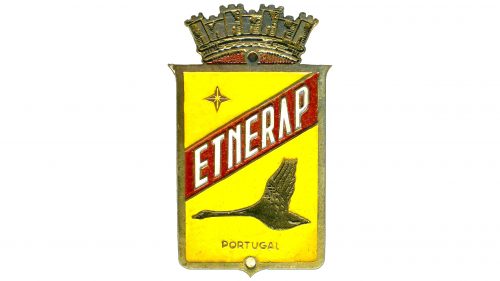The Etnerap logo embodies love for the homeland through regional symbolism. The emblem conveys the reliability of the company’s vehicles, highlighting their external beauty, sleek design, and smooth ride. Each model is worthy of an award ribbon as a symbol of perfection.
Etnerap: Brand overview
Invented in the late 1940s by visionary businessman António Augusto Parente, Etnerap was first established in Portugal. Initially, the company specialized in the production of bicycles and motorcycle components. In the 1950s, the company began to expand into producing small racing cars designed for amateur racing circuits.
By producing its first race car in 1953, Etnerap captured the public’s attention. The car had a sleek aluminum body superimposed on a Fiat 1100 frame. In the following years, the company built various race car models in limited editions and competed in several domestic competitions. These cars were admired for their maneuverability and lightness, and Etnerap began to gain a reputation in the sports car field.
In the late 1950s, however, Etnerap sought to take its business to the next level by tapping into the commercial car market. Despite these ambitions, the company faced insurmountable financial difficulties and infrastructural constraints. After several failed prototypes, the company was forced to fold by the early 1960s, unable to adapt to the rapidly changing automobile industry.
Although Etnerap did not last long, it made a lasting impression as one of the first innovators in the Portuguese automobile industry. Its bold logo, decorated with a checkered racing flag, is still an emblem of the country’s emerging passion for motor racing. Although this is a hypothetical account, it offers a possible backstory of what Etnerap may have represented.
Meaning and History
What is Etnerap?
It is a company founded in Portugal by businessman António Augusto Parente. It was known for producing small, lightweight sports cars for road use and racing. The cars were recognized for their agility, performance, and design. Despite its niche appeal and engineering quality, the brand encountered problems in a competitive market and eventually ceased production.
1950s – 1953
The first logo is designed to fit on a bicycle handlebar. The sign has a romantic style and includes many symbols related to the company.
The first symbol is a ship, representing travel. Its sails bear Maltese crosses, highlighting the historical Crusades and Reconquista, which led to the territory becoming part of Portugal.
The second important symbol is the coat of arms of Portugal, the country where the bikes were produced. The third is the castle of Algés, where production began.
The company’s name is written diagonally across the shield’s center, showing a drive for development. The top of the logo features the brand’s main product, bicycles, and the bottom emphasizes the country name again.
The red background with gold accents, like a royal cloak, underscores the high quality of the products.
1953 – 1957
The Etnerap logo, representing a Portuguese company, features a bird with a long neck, likely a swan or goose, with raised wings symbolizing movement and growth. The bird and the word “PORTUGAL” below it are in bronze, conveying tradition and nobility.
The brand name “Etnerap” is white against a red parallelogram, making it stand out. This design choice ensures the name is easily recognizable. A four-pointed star in the upper left corner adds elegance.
The background is a yellow heraldic shield, symbolizing heritage and excellence. A crown is at the top of the shield, representing regal authority and quality. The bronze bird, white brand name, and yellow shield create a visually appealing logo that communicates high standards and distinguished heritage.
Choosing a different bird instead of the traditional rooster highlights the company’s uniqueness. The bronze color ties in with the yellow shield and crown, reinforcing a sense of tradition and quality. This color scheme enhances the visual appeal and emphasizes the company’s commitment to superior standards.






